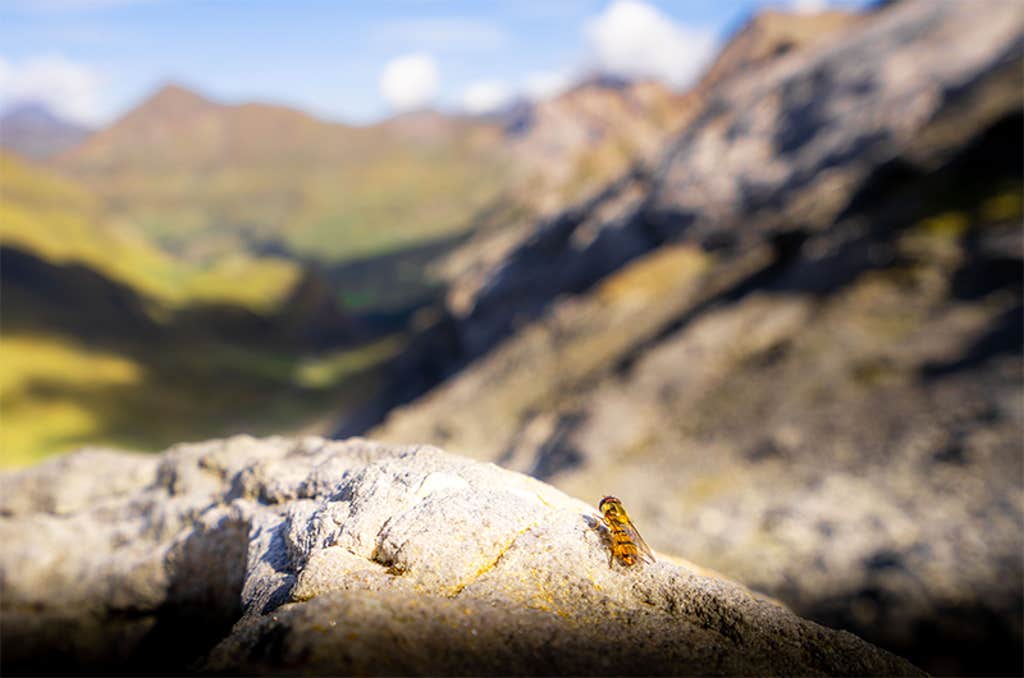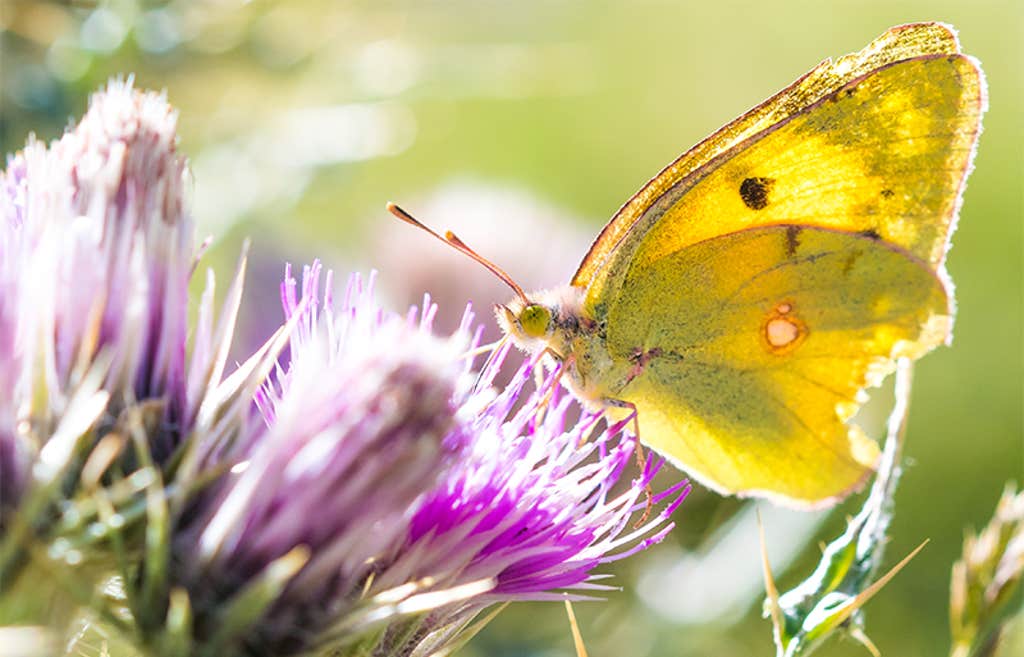In late summer, as the days shorten and begin to cool, the marmalade hoverfly begins to prepare her body for the long journey ahead. Her flight muscles strengthen, her eyesight sharpens, and her immune system bulks up until she is no longer a frail maggot, but a formidable creature ready to take part in a massive seasonal migration. When the winds finally turn favorable, she mates, packs up the sperm, and flies south. With the help of tailwinds, she flies across the plains of Europe, crosses the Pyrenees mountains that straddle Spain and France, and lands in the green pastures of the Iberian Peninsula. Here, she fertilizes her eggs, lays them, and finally—likely exhausted—drops dead.
The marmalade hoverfly does not fly alone. Some 17.1 million insects traverse the Pyrenees every fall alongside her, according to a new study co-authored by William Hawkes, a researcher at the University of Exeter who studies the mass migration of insects. That journey is part of an even more stunning global migration: Trillions of insects take to the skies each year for the long trip from mating to birthing grounds, collectively exceeding all known terrestrial and aerial migrations both in abundance of individual creatures and biomass.
Working in a narrow pass situated at an altitude of nearly 7,500 feet, Hawkes and his colleagues recorded the average number and variety of insects flying over the Pyrenees each season over four consecutive years, from 2018 through 2021. Roughly 89 percent of the insects that chart this course are different varieties of flies, they found. The rest include bees, wasps, butterflies, moths, and dragonflies.
“I was there with my net, and throughout the day these butterflies had been passing me on migration,” Hawkes recalls of one of the days on site. Just after lunch it became, “almost like a blizzard or a snowstorm of cabbage whites and clouded yellow butterflies coming through.” Still later, the sky became a swarm of flies, a “carpet of energy,” he says. “You could only just hear it, but it wasn’t like a bee in your garden going between flowers or a fly in your house moving around. It was this real purposeful, directed hum of movement.” That day the team recorded 11,000 insects crossing per foot in a single minute.
The most important thing they did in the mountains was to identify everything, says Hawkes. His main role at the site was to study under a microscope the insects the team collected in traps and nets. Insect migrations, which happen during seasonal changes all over the globe, have enormous impacts on food webs, pollination, and infectious disease. Taxonomy is so critical because knowing which species are moving helps the scientists understand what ecological roles they play.

The pass where the researchers posted up is a bottleneck along the so-called Western European flyway, where the annual mass migration of insects can be captured at ground level using mounted cameras, nets, and insect traps. “The reason they’re using the pass is because they’re getting funneled up the steep sides of mountain valleys,” Hawkes explains. “They don’t find it very easy to migrate over the high peaks unless the weather is perfect.”
Trillions of insects take to the skies each year, collectively exceeding all known terrestrial and aerial migrations.
Measuring about 100 feet across, the bottleneck is a perfect spot to sample the mass migration, which is otherwise too diffuse for humans to observe. (Other popular spots for monitoring insect migrations include a bottleneck in the German Alps, which has been studied since 1978, and the tip of Cyprus.) Radar recordings confirm that, globally, trillions of insects migrate each year. But radar are blind to the identity of the species making this pilgrimage.

The new study reports that 90 percent of the species crossing the Pyrenees were pollinators. This is a particularly important function given the rapidly changing climate. Pollen carried by the migrating insects could prove to be a source of genetic variation necessary for both plant and insect survival. For example, it is possible that the insect flyway could help bring drought-resistant adaptations from Mediterranean plants to more northerly regions that are beginning to experience water shortages, Hawkes says. Hoverflies and other insects migrate over multiple generations, so that the offspring born in Spain travel north in the spring.
Many of the migrating insects are also pest controllers, Hawkes adds. “The marmalade and the Eupeodes hoverfly in the United Kingdom, just these two species eat about 6 to 10 trillion aphids every year.” And it is likely that migrating insects are a source of fertilizer, since their decomposing bodies are rich in nitrogen and phosphorus, key soil nutrients. But how reliant the vegetation is on these inputs remains to be quantified.
Only a handful of scientists around the world specialize in insect migrations. They have an enormous task ahead of them. While shifting seasonal temperatures are not a major concern to the hardy insects, extreme weather events are considered a potential long-term threat to their survival. Hawkes says, “I really want everyone to love and to notice these insects.” ![]()
Lead photo by William Hawkes.





















